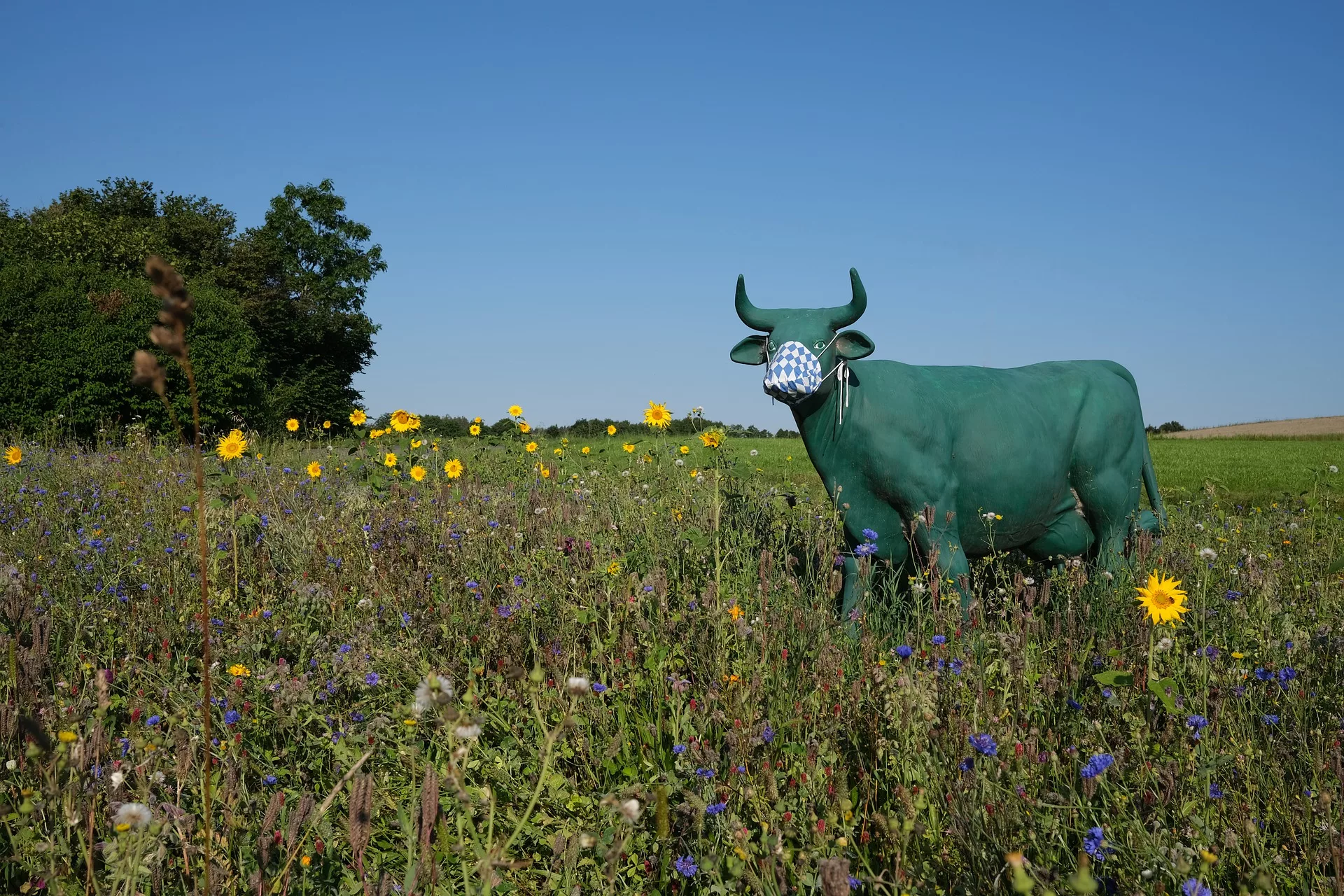You may have read recent stories about cow masks.
Created by a UK start-up, the masks cover dairy cows noses to absorb methane released by their burps and exhales to help reduce agriculture’s carbon footprint. On the surface, as someone who raises cattle, it seems a little silly. But innovation is serious business.
Whether the product takes off is anyone’s guess, but it’s this kind of forward-thinking and the spirit of continuous improvement that excites me – and drives farmers, researchers and scientists who look to do things better every day to produce our food for the sake of the animals, people and the planet.
Advances in agriculture over the past few decades are astounding – robotic milkers on dairies, drones that scout, map and survey fields, and apps to monitor climate, feed and water in poultry and swine barns.
These are just a handful of the many innovations agriculture has incorporated to become more efficient over the past several decades.
Celebrating “Efficient”
Most of us use technology at home or on the job to be more efficient. Think automatic bill pay, calendar apps, Zoom meetings, cell phones, robotic sweepers. But when it comes to food production, the word “efficiency” often gets a bad rap.
The assumption is if agriculture is “efficient”, those producing our food are somehow cutting corners. Nothing could be further from the truth. It means we’re doing a better job with the resources that have been entrusted to our care.
Farmers’ overarching goal is to provide safe, nutritious food to families around the globe in a way that protects our natural resources and upholds the highest standards of animal care. In order to achieve that goal they must strive to be more efficient, which may mean continually incorporating research-based technology and practices.
Frankly, as a farmer, and a veterinarian who took an oath to do no harm, I take this responsibility seriously.
I’ve been to countries where access to nutritious food is very limited and that’s why I do what I do. In fact, it was a high school mission trip to Haiti where I saw hunger firsthand that sparked my interest in a career where I could play a part in ensuring people have access to meat, milk and eggs.
Big Isn’t Bad
Often, it’s the larger farms – what some might call “corporate or factory farms” – that have the ability to incorporate the latest and greatest innovations.
For our animals: Fit Bit-style trackers to monitor animal health, high-tech barns and feed additives that help keep animals healthy, automatic feeders that allow pigs to eat when they want but keeps them from being over-fed. Farmers who raise animals often grow crops that feed the animals. Animal manure is then used to fertilize those crops. It’s an amazing – and efficient – circular process.
For our environment: soil tests that allow farmers to pinpoint placement of water and crop protection products to prevent overuse. It’s what we call precision agriculture. Farmers are also incorporating practices like no-till and planting cover crops – techniques that not only help improve soil and water health, but store carbon from the atmosphere to address climate change.
Technology and innovation help a farm be more productive and efficient, which are key factors to reducing environmental impact. While there’s a place for farms large and small, larger farms are typically more efficient.
I’m not disparaging small farms; my husband and I manage one. Small farms make sure they’re doing all they can to produce healthy food and take care of their animals. But it’s simply a matter of dollars and cents.
In order for most small farms to stay in business, they must grow. Profit margins in farming tend to be so low that it’s difficult for small farms to thrive as a sole source of income.
For example, when it comes to purchasing feed or other items for our farm, we don’t buy in volume, which typically is discounted. Purchasing newer technology or equipment is capital intensive and often just doesn’t make financial sense when farming several hundred acres of crops versus several thousand. On smaller farms, managers are Jacks/Jennies of all trades. Large farms have the capacity to hire specialists.
In other words, it’s easier for larger farms to have the ability to adopt technology that leads to improved productivity and efficiency, which means less use of resources and a lower carbon footprint.
Some people long to return to the days of small farms with big red barns and animals frolicking in fields bounded by white picket fences. The reality is the growth of farms in the U.S. is the reason we all have access to safe, nutritious, affordable food.
I’ll take increased efficiency in food production over the status quo any day because I know it means agriculture is using technology to do things better. So keep the creative thinking coming. I’m excited to see what’s next.
